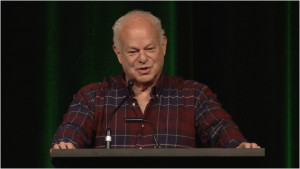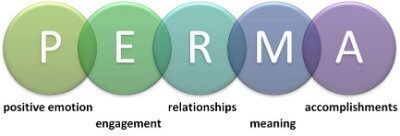Who Is Martin Seligman and What Does He Do?
 If you were wondering who is Martin Seligman, you will find the answer here.
If you were wondering who is Martin Seligman, you will find the answer here.
Martin Seligman is called the “father of positive psychology” is known as one of the leading researchers in the whole field of psychology.
Born August 12, 1942, in New York, educator, researcher, and author of several books, Martin Seligman helped make positive psychology accessible to everyone interested.
He served as the director of the clinical training program of the University of Pennsylvania for 14 years, where his work revolved around the topics of learned helplessness, positive psychology, depression, resilience, optimism, and pessimism.
“The defining characteristic of pessimists is that they tend to believe that bad events will last a long time, will undermine everything they do, and are their own fault. The optimists, who are confronted with the same hard knocks of this world, think about misfortune in the opposite way. They tend to believe that defeat is just a temporary setback or a challenge, that its causes are just confined to this one case.”
Martin Seligman, 1991
Two of Seligman’s most well-known positions are as the Zellerbach Family Professor of Psychology and the director and founder of the Positive Psychology Center at the University of Pennsylvania.
Before you continue, we thought you might like to download our three Positive Psychology Exercises for free. These science-based exercises will explore fundamental aspects of positive psychology including strengths, values, and self-compassion, and will give you the tools to enhance the wellbeing of your clients, students, or employees.
This Article Contains:
Martin Seligman’s Writings
Martin Seligman wrote around 30 self-help books and over 350 articles about the science of what makes life worth living.
Some of his books include:
- Learned Optimism (1991)
- The Optimistic Child (1995)
- Abnormal Psychology (1982)
- Authentic Happiness (2002)
- What You Can Change And What You Can’t (2007)
- Flourish (2011)
- The Hope Circuit (2018)
After graduating with a degree in philosophy in 1964 at Princeton, Seligman earned his PhD in psychology in 1967 at the University of Pennsylvania.
In 1998, he served as the president of the American Psychological Association. One of his primary activities was to encourage positive psychology as a field of scientific study.
TED Talk on Positive Psychology
Below you will find Martin Seligman’s inspiring TED Talk called The New Era of Positive Psychology.
In his talk, Seligman summarizes the state of psychology today. Then he continues to explain the three tenets of positive psychology, while also conveying the historic mistake of psychology:
“In our rush to do something about people in trouble, in our rush to do something about repairing damage, it never occurred to us to develop interventions to make people happier—positive interventions.”
Martin Seligman, 2004
If you have a moment, be sure to watch his TED Talk. It is a powerful introduction into the scientific study of positive psychology.
Character Strengths and Virtues
Because of his engagement in the field, Seligman worked on a classification manual called ‘Character Strengths and Virtues,’ which focuses on what can go right instead of what can go wrong.
This classification manual of character strengths and virtues consists of six classes of virtues that include 27 character strengths.
Today, the manual functions as the “positive counterpart” to the Diagnostic and Statistical Manual of Mental Disorders (DSM). While the DSM studies disorders, Seligman’s character strengths offer a review of the traits that influence wellbeing.
Learned Helplessness

“Learned helplessness is a term specifying an organism learning to accept and endure unpleasant stimuli, and unwilling to avoid them, even when it is avoidable.”
(Seligman & Maier, 1967)
The idea behind the theory of learned helplessness is that animals can be conditioned to think that they have no control over the outcome of a situation that they are in, even when they actually do have the power to help themselves.
This occurs when they are repeatedly presented with an aversive stimulus that they can’t escape. The theory can also be applied to human beings who think that they cannot change a situation that makes them feel helpless.
These people may be more likely to develop a mental illness such as clinical depression (Miller & Seligman, 1975). These findings led to a lot of other related studies that have helped psychologists understand the basis of depression (more about that here).
Seligman used his knowledge of learned helplessness when working with the military to increase the psychological health of soldiers and decrease the rates of soldiers experiencing post-traumatic stress disorder.
The PERMA Model
In his work with the soldiers, Seligman created the PERMA model as a template to explore optimal human functioning and happiness.
In much of his work, Seligman familiarized the soldiers with this model and its five main features that are crucial for lasting wellbeing. These features are:
- Positive emotion,
- Engagement,
- Positive relationships,
- Meaning, and
- Accomplishment or Achievement.
The basic idea is that to work toward a state of contentment, we must first understand what a happy life consists of. The PERMA model can be applied to anyone seeking balance and fulfillment.
Positive Psychology Center
In 2003, Martin Seligman founded the Positive Psychology Center at the University of Pennsylvania. The center’s mission is to promote research, training, education, and the dissemination of positive psychology, resilience and grit.
Some of the center’s activities include empirical research, educating students toward a Master of Applied Positive Psychology, developing empirically valid curricula and train-the-trainer programs, and hosting conferences on the latest findings in positive psychology.
A Take-Home Message
While positive psychology is the study of what makes people happy, according to Seligman, “happiness” is not the end goal—and maybe not even an attainable one.
Seligman’s research examines three forms of happy lives: a pleasant life, a life of engagement, and a life of meaning.
Did we adequately fill you in on who is Martin Seligman? Want to learn more about this leader in the field? His books are bestsellers. Perhaps it is a good time to start reading Authentic Happiness or Flourish. It might change your life, or at least, make you consider what value you want at the center of your life.
What do you think of Seligman’s influence in the field? Please leave a comment below. We would love to hear from you.
We hope you enjoyed reading this article. Don’t forget to download our three Positive Psychology Exercises for free.
- Miller, W. R., & Seligman, M. E. (1975). Depression and learned helplessness in man. Journal of Abnormal Psychology, 84(3), 228–238.
- Seligman, M. E., & Maier, S. F. (1967). Failure to escape traumatic shock. Journal of Experimental Psychology, 74(1), 1–9.
- Seligman, M. E. (1991). Learned optimism. Knopf.
- Seligman, M. E. (2004). The new era of positive psychology [Video]. TED. https://www.ted.com/talks/martin_seligman_the_new_era_of_positive_psychology?language=en
Let us know your thoughts
Read other articles by their category
- Body & Brain (49)
- Coaching & Application (57)
- Compassion (26)
- Counseling (51)
- Emotional Intelligence (24)
- Gratitude (18)
- Grief & Bereavement (21)
- Happiness & SWB (40)
- Meaning & Values (26)
- Meditation (20)
- Mindfulness (45)
- Motivation & Goals (45)
- Optimism & Mindset (34)
- Positive CBT (28)
- Positive Communication (20)
- Positive Education (47)
- Positive Emotions (32)
- Positive Leadership (18)
- Positive Parenting (4)
- Positive Psychology (33)
- Positive Workplace (37)
- Productivity (16)
- Relationships (46)
- Resilience & Coping (36)
- Self Awareness (21)
- Self Esteem (38)
- Strengths & Virtues (31)
- Stress & Burnout Prevention (34)
- Theory & Books (46)
- Therapy Exercises (37)
- Types of Therapy (64)






What our readers think
Very keen to explore positive psychology work and tools.
Der “Wissenschaftler” hat Hunde gequält zu Forschungszeecken. Ganz toll und positiv. Der gehört in den Knast und nicht gefeiert!!!!!
Hi! I am so excited to have been guided to study positive psychology! I learning and using the work of Dr. Seligman as a student PMHNP. I am a former Penn GUnursing2000. I really relate to his theories and am looking to learn more. I would love to visit the Positivity center one day, I am sure Penn has changed these past 21 yrs. Thank you Dr. Seligman for this amazing work.
Patti